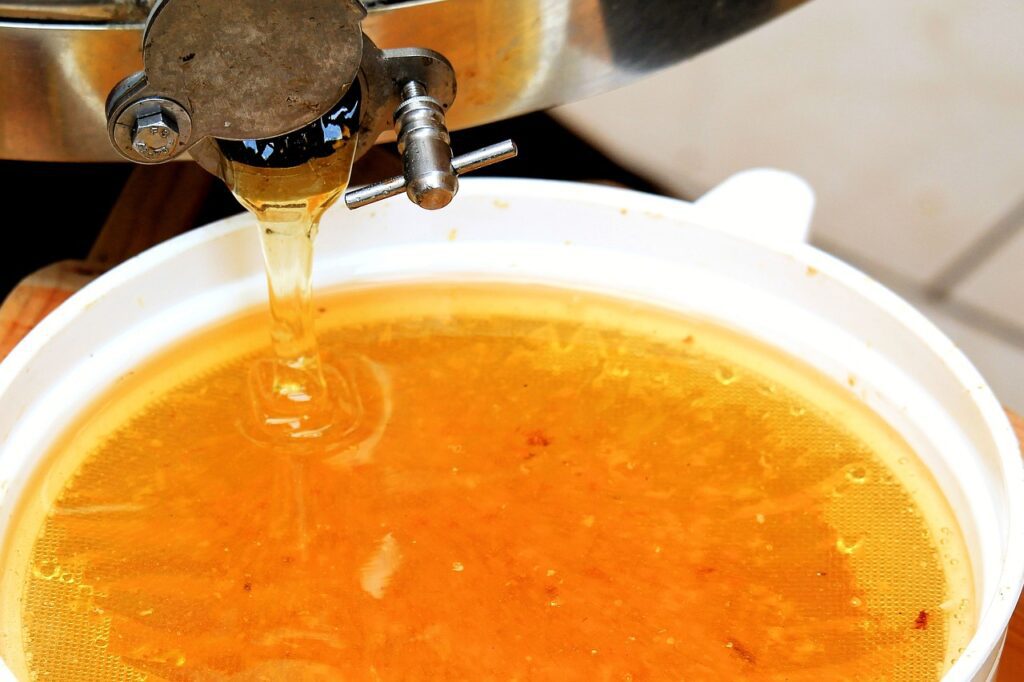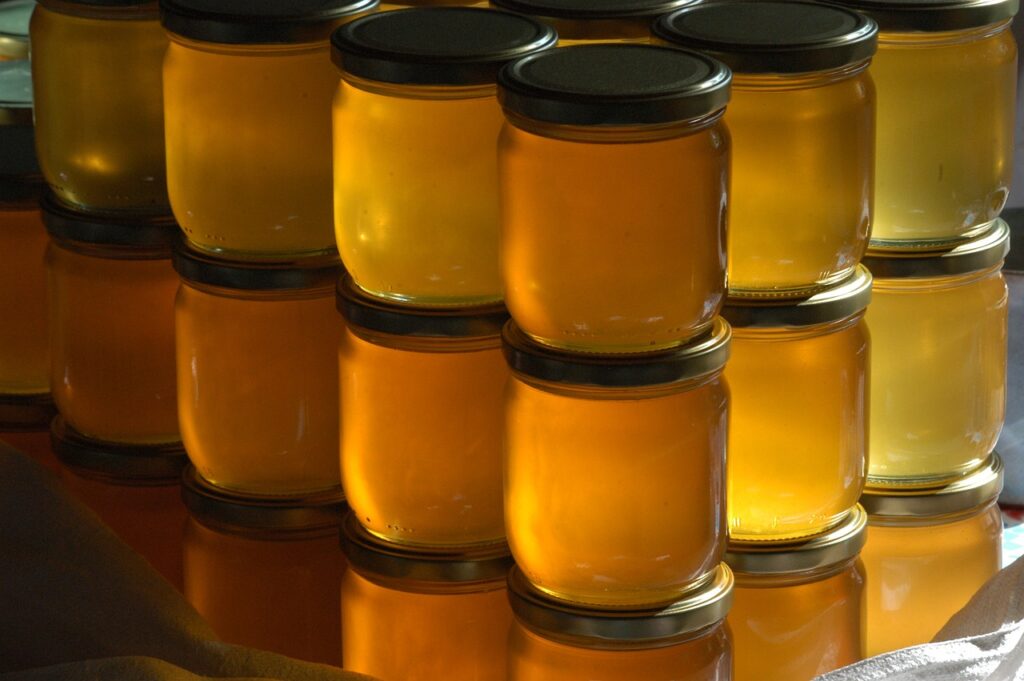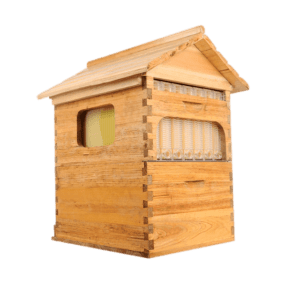Finding the perfect honey extractor involves understanding key factors such as frame capacity, which significantly impacts the efficiency of honey extraction processes. Whether you’re a novice beekeeper or seasoned professional, choosing the right extractor can streamline operations and maximize honey yield. Frame capacity plays a crucial role in determining the extractor’s suitability for your apiary size and production goals.

Table of Contents
1. Consider the Type of Honey Extractor
Manual Extractors
Manual honey extractors require the beekeeper to use a hand crank to spin the frames and extract the honey. These extractors are typically more affordable, making them a good option for hobbyists or those with a smaller number of hives. One of the advantages of manual extractors is that they do not rely on electricity, making them suitable for off-grid or remote locations. However, the manual effort required can be tiring, especially if you have multiple hives to harvest. It’s important to consider your physical ability and the amount of honey you expect to extract when deciding if a manual extractor is right for you.
Electric Extractors
Electric honey extractors use a motor to spin the frames, making the extraction process faster and less labor-intensive. These extractors are ideal for beekeepers with larger operations or those who prefer a more efficient process. Electric extractors come in various sizes and capacities, allowing you to choose one that fits your needs. The main drawback is the higher cost compared to manual extractors, but the time and effort saved can be worth the investment. Additionally, having access to electricity is a requirement, so consider your setup before choosing an electric model.
Comparing Manual and Electric Honey Spinner Extractors
When deciding between manual and electric honey extractors, several factors should be taken into account to ensure you make the best choice for your beekeeping needs.
- Cost: Manual extractors are generally more affordable than electric ones. This lower cost makes them an attractive option for beginners or hobbyists who may not want to invest heavily in equipment. Electric extractors, while more expensive upfront, can save time and reduce physical labor, potentially offering better value for larger operations.
- Effort and Efficiency: Manual extractors require physical effort to operate, which can be tiring, especially if you have many frames to extract. The hand-cranking process can be slow, making manual extractors less efficient for large-scale beekeeping. Electric extractors, on the other hand, automate the spinning process, significantly reducing the effort required and speeding up the extraction process. This efficiency makes electric extractors ideal for commercial beekeepers or those with numerous hives.
- Electricity Requirements: Manual extractors do not require electricity, making them suitable for off-grid or remote locations where power access may be limited. This independence from electricity can be a significant advantage in certain situations. Electric extractors, however, need a reliable power source. If your beekeeping operation is in an area with unstable electricity or you plan to move the extractor to different locations, the need for power can be a drawback.
- Maintenance and Durability: Manual extractors generally have fewer components and simpler mechanisms, making them easier to maintain and repair. The lack of electrical parts reduces the likelihood of mechanical failures and extends the lifespan of the equipment. Electric extractors, with their motors and electrical components, may require more maintenance and can be more prone to mechanical issues. However, reputable brands often provide reliable electric extractors that can last many years with proper care.
- User Experience: The user experience can vary significantly between manual and electric extractors. Manual extractors provide a hands-on, traditional beekeeping experience that some hobbyists enjoy. The tactile nature of hand-cranking can be satisfying and offer a closer connection to the beekeeping process. Electric extractors, by contrast, offer convenience and ease of use, allowing beekeepers to focus on other tasks while the machine does the work. This convenience can be especially valuable during busy harvest seasons.
- Capacity: Electric extractors often come in larger capacities compared to manual models. If you have a large number of hives, the ability to process more frames at once with an electric extractor can be a significant time-saver. Manual extractors, while available in various sizes, are typically better suited for smaller operations.
The choice between manual and electric honey extractors depends on your specific needs, budget, and beekeeping scale. For hobbyists or those in remote areas, a manual extractor offers affordability and independence from electricity. For larger operations or those seeking efficiency, an electric extractor can save time and labor, making the higher cost a worthwhile investment. By considering these factors, you can choose the extractor that best suits your beekeeping practices and goals.
2. Evaluate the Extractor’s Capacity
Frame Capacity
The capacity of a honey extractor is determined by the number of frames it can hold at once. Smaller extractors may accommodate 2-4 frames, while larger models can hold up to 20 or more. For hobbyists or small-scale beekeepers, a smaller capacity extractor may be sufficient. However, if you have a larger apiary or plan to expand, a higher capacity extractor will save you time and effort during the extraction process. Consider your current and future needs when evaluating the frame capacity of an extractor.
2 Frame Honey Extractor
- Ideal for Small-Scale Operations: A 2 frame honey extractor is suitable for hobbyists or small-scale beekeepers with a limited number of hives. It offers a compact size and ease of handling, making it ideal for occasional honey extraction sessions.
- Portability: Smaller extractors are generally more portable and easier to store when not in use, making them convenient for beekeepers with limited space or those who need to transport their equipment.
- Efficiency Considerations: While smaller in capacity, a 2 frame extractor can still provide sufficient throughput for beekeepers managing a modest number of hives, ensuring timely honey extraction during peak harvest periods.
4 Frame Honey Extractor
- Considerations for Maintenance: With more frames comes added maintenance requirements. Beekeepers should ensure proper cleaning and upkeep to maintain the extractor’s performance and longevity, especially during intensive harvesting seasons.
- Increased Capacity: A 4 frame honey extractor offers greater throughput compared to smaller models, making it suitable for beekeepers with a growing apiary or moderate-sized operations. It allows for more efficient honey extraction, reducing the overall time spent during harvest.
- Scalability: Beekeepers planning to expand their apiary or increase honey production will benefit from the higher capacity of a 4 frame extractor. It accommodates a larger volume of frames, streamlining the extraction process and enhancing operational efficiency.
- Modern Honey Production: 12 Proven Methods to Boost Output
Radial vs. Tangential Configuration
Honey extractors can have either radial or tangential configurations. In a radial extractor, the frames are placed with the top bar facing outwards, allowing honey to be extracted from both sides of the frame simultaneously. This configuration is efficient and reduces the time required for extraction. Tangential extractors, on the other hand, require frames to be flipped to extract honey from both sides. While tangential extractors are often less expensive, they can be more time-consuming to use. Understanding the differences between these configurations can help you choose the right extractor for your needs.
Radial Honey Extractor vs. Tangential Honey Extractor
- Radial Configuration:
- Efficiency: Radial extractors are designed for efficiency, allowing honey to be extracted from both sides of the frame without the need to flip the frames. This means that the extraction process is faster and less labor-intensive, making radial extractors ideal for beekeepers with a large number of hives or those looking to save time during the extraction process.
- Even Extraction: Because the frames are spun with the top bar facing outwards, the centrifugal force is applied evenly, reducing the risk of frame damage. This even extraction process ensures that honey is removed efficiently and thoroughly from each frame. Radial extractors are particularly beneficial for extracting honey from delicate combs, as the risk of breaking the comb is minimized.
- Tangential Configuration:
- Cost-Effectiveness: Tangential extractors are generally more affordable than radial extractors, making them a good option for hobbyists or beekeepers on a budget. While they may require more manual effort and time to extract honey, the lower cost can be a significant factor for those just starting out in beekeeping.
- Versatility: Tangential extractors can be more versatile in terms of the frame sizes they can accommodate. Since frames are placed one side at a time, different frame sizes can be extracted without needing to purchase additional equipment or adaptors. This versatility makes tangential extractors a flexible choice for beekeepers who use various frame sizes in their hives.
3. Check the Material Quality
Stainless Steel Extractors
Stainless steel honey extractors are known for their durability, resistance to rust, and ease of cleaning. These extractors are a good investment for serious beekeepers and those looking for a long-lasting piece of equipment. Stainless steel does not react with honey, ensuring that the taste and quality of the honey remain unaffected. While the initial cost may be higher, the longevity and low maintenance requirements make stainless steel extractors a popular choice among beekeepers.
Plastic Extractors
Plastic honey extractors are typically more affordable than stainless steel models, making them accessible to hobbyists or those on a budget. However, plastic extractors may not be as durable and can be prone to cracking or warping over time. They are also more susceptible to scratching, which can create areas for bacteria to grow. If you opt for a plastic extractor, ensure it is made from food-grade plastic to avoid contamination. Consider the trade-offs between cost and durability when choosing a plastic extractor.
Comparing Stainless Steel and Plastic Extractors
When deciding between stainless steel and plastic honey extractors, several factors should be considered to ensure you make the best choice for your beekeeping needs.
- Durability: Stainless steel extractors are far more durable than plastic ones. They can withstand the rigors of regular use without cracking, warping, or showing signs of wear. Plastic extractors, while initially cheaper, may require replacement sooner due to their susceptibility to damage from repeated use or exposure to the elements.
- Maintenance: Stainless steel is easier to clean and maintain. Its smooth surface resists scratches and does not harbor bacteria, ensuring that your honey remains uncontaminated. Plastic extractors, on the other hand, can get scratched easily, providing a breeding ground for bacteria and requiring more thorough cleaning.
- Cost: Plastic extractors are generally more affordable, which makes them an attractive option for beginner beekeepers or those on a tight budget. Stainless steel extractors, while more expensive upfront, offer better long-term value due to their durability and lower maintenance costs.
- Honey Quality: Stainless steel does not react with honey, preserving its natural taste and quality. While food-grade plastic is safe for honey extraction, it may not provide the same level of assurance in terms of preserving honey quality over time, especially if the plastic becomes scratched or damaged.
- Weight and Portability: Plastic extractors are usually lighter and easier to move around compared to their stainless steel counterparts. This can be an important consideration if you need to transport the extractor frequently or have limited strength or mobility.
- Aesthetic and Professional Appeal: Stainless steel extractors often have a more professional and polished appearance, which can be a factor if you are selling honey commercially or giving tours of your beekeeping operation. Plastic extractors, while functional, may not convey the same level of professionalism.
The choice between stainless steel and plastic honey extractors depends on your specific needs, budget, and priorities. If durability, ease of maintenance, and long-term value are important to you, investing in a stainless steel extractor is likely the better option. However, if cost and portability are your primary concerns, a plastic extractor can be a suitable and budget-friendly choice.

4. Assess the Ease of Cleaning
Removable Parts
Keeping your honey extractor clean is essential for maintaining honey quality and preventing contamination. Extractors with removable parts make cleaning much easier, as you can disassemble them and thoroughly clean each component. Look for models with parts that are dishwasher-safe or easy to clean by hand. Regular cleaning will extend the life of your extractor and ensure that your honey remains pure and uncontaminated.
Accessibility and Design
The design of the honey extractor can significantly impact how easy it is to clean. Extractors with smooth surfaces and fewer crevices are easier to wipe down and maintain. Some models feature special cleaning tools or brushes that can help you reach difficult areas. Consider how the design of the extractor will affect your cleaning routine and choose a model that prioritizes hygiene and ease of maintenance. A well-designed extractor will save you time and effort in the long run.
5. Look for Safety Features
Stability
Safety should be a top consideration when choosing a honey extractor. Look for models with sturdy legs or a stable base to prevent tipping during use. An unstable extractor can be dangerous, especially when spinning at high speeds. Ensure that the extractor you choose has a solid and secure footing to minimize the risk of accidents. Additionally, some extractors come with mounting options to further enhance stability.
Lid Safety
Extractors with secure lids can prevent spills and reduce the risk of injury from moving parts. A well-fitting lid ensures that honey does not splash out during the extraction process, keeping your workspace clean and safe. Some electric models also include safety switches that automatically shut off the motor if the lid is opened during operation. These features protect both you and your honey, making the extraction process safer and more efficient.
6. Consider the Cost and Warranty
Budget Considerations
Honey extractors come in a wide range of prices, from budget-friendly models to high-end professional equipment. Consider how much you are willing to invest and balance it against the features and capacity you need. While it may be tempting to opt for the cheapest option, investing in a higher-quality extractor can save you money in the long run by reducing the need for repairs or replacements. Evaluate your budget and choose an extractor that offers the best value for your money.
Warranty and Customer Support
A good warranty can provide peace of mind and protect your investment in case of defects or malfunctions. Check the warranty offered by the manufacturer and ensure it covers key components and potential issues. Additionally, consider the availability and quality of customer support. A responsive and helpful customer service team can assist with troubleshooting and ensure that any problems are resolved quickly. A solid warranty and reliable customer support are important factors when choosing a honey extractor.

7. Read Reviews and Ask for Recommendations
Online Reviews
Before purchasing a honey extractor, read reviews from other beekeepers to learn about their experiences with different models. Reviews can provide valuable insights into the pros and cons of specific extractors, as well as tips for getting the most out of them. Pay attention to common themes and recurring issues mentioned in the reviews. This information can help you avoid potential pitfalls and make an informed decision.
Recommendations from Fellow Beekeepers
In addition to online reviews, ask fellow beekeepers for recommendations based on their firsthand experiences. Talking to experienced beekeepers can provide practical advice and highlight features that may not be apparent from product descriptions alone. Beekeepers who have used various extractors can offer valuable insights and help you choose a model that suits your specific needs. Gathering information from multiple sources will increase your chances of finding the perfect honey extractor.
8. Consider the Extractor’s Size and Portability
Space Requirements
The size and portability of a honey extractor are important factors, especially if you have limited space in your beekeeping area. Measure the available space and ensure the extractor you choose will fit comfortably. Consider where you will store the extractor when not in use and whether it will be easy to move if needed. An extractor that is too large for your space can be cumbersome and difficult to manage.
Mobility and Transport
If you need to transport the extractor to different locations, look for models with wheels or handles for easier mobility. Extractors with built-in wheels can be moved around your apiary or storage area with minimal effort. Additionally, consider the weight of the extractor and whether it can be easily lifted and transported. Balancing size and portability with capacity and functionality will help you find an extractor that meets your needs without causing unnecessary hassle.

Additional Resources
Advanced Techniques in Apiculture: 10 Pro Tips for Beekeepers
8 Steps to Setting Up Your First Honey Farm: A Beginner’s Checklist
Honey from the USDA
Conclusion
Selecting the ideal honey extractor requires careful consideration of frame capacity alongside other features. For hobbyists and small-scale beekeepers, a compact extractor with 2 frames may suffice, offering ease of use and storage. Meanwhile, larger 4-frame extractors are ideal for expanding operations, enhancing throughput and efficiency during honey harvests. By aligning extractor capacity with your beekeeping needs, you can optimize productivity and ensure a successful honey extraction season.



